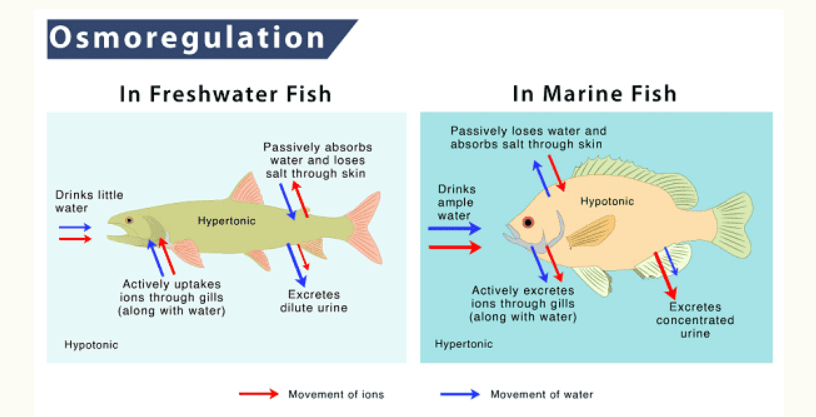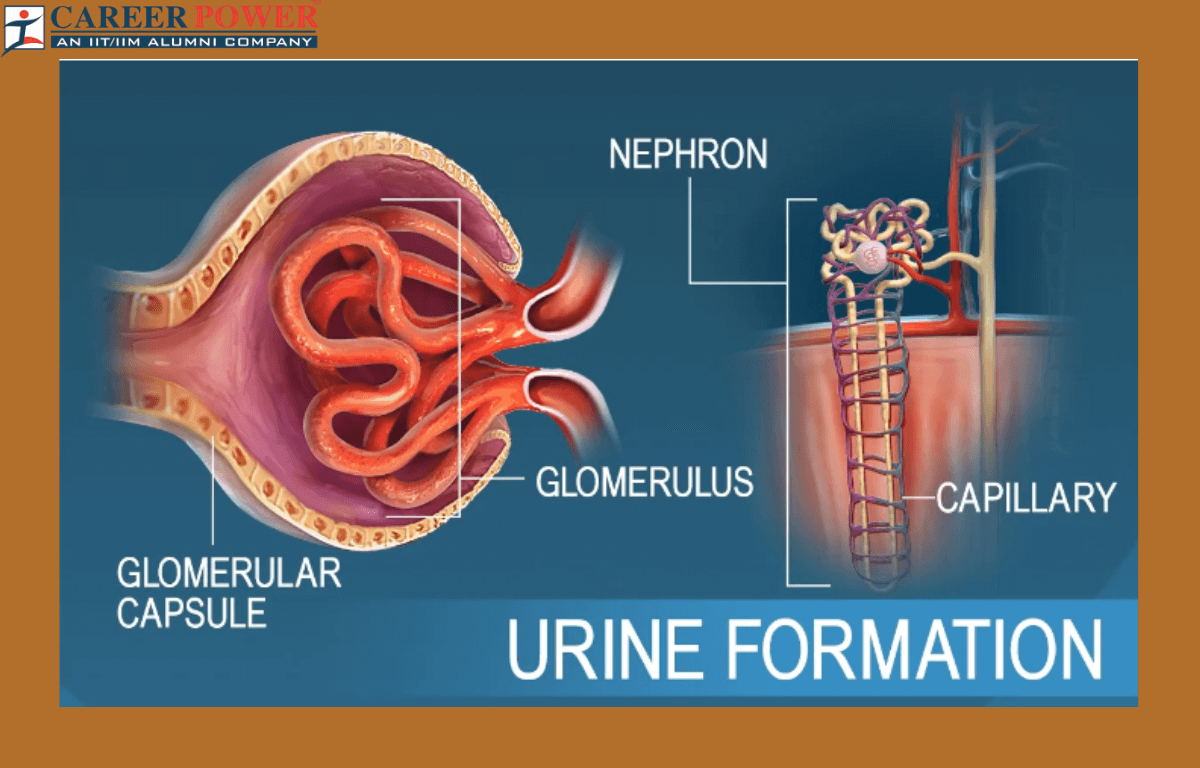Excretion is the body’s way of eliminating waste and harmful substances to maintain internal balance and health. It involves several organs and systems working together to remove metabolic waste products, toxins, and excess substances. The kidneys play a central role by filtering blood to remove waste and excess fluids, which are then excreted as urine. The digestive system also contributes by expelling undigested food and metabolic products such as feces. Additionally, the skin excreates sweat, containing water, salts, and a small amount of waste. Through these processes, the body ensures that harmful substances are expelled, helping to maintain overall well-being.
Urine Formation
Urine formation is how your body gets rid of waste and extra stuff it doesn’t need. It happens in your Kidneys, which act like filters. First, your blood flows into tiny structures called Nephrons. There, the blood is filtered, separating out waste products and extra water and minerals. The good stuff your body still needs, like water and certain chemicals, gets absorbed back into the blood. The waste and extra water form urine. Then, the urine travels down tubes called ureters to your bladder, where it is stored until you are ready to pee, the urine flows out of your body through a tube called the urethra. This whole process is completed in three different steps: Glomerular filtration, Reabsorption, and Secretion. The complete process of urine formation helps to keep our body’s balance of water and minerals.

Components of Urine
Urine is a complex fluid composed of various substances that are filtered and excreted by the kidneys. The composition of urine can vary depending on factors such as hydration level, diet, medications, and overall health status. Analysis of urine can Here are the major components of Urine:
- Water: Water makes up the majority of urine composition, typically around 95%. It serves as a solvent for other substances and helps maintain hydration.
- Urea: Urea is a waste product formed from the breakdown of proteins in the liver. It accounts for a significant portion of urine’s solids and is a primary way the body eliminates nitrogenous waste.
- Creatinine: Creatinine is another waste product generated by muscle metabolism. It is filtered out of the blood by the kidneys and excreted in urine. Creatinine levels can be used to assess kidney function.
- Uric Acid: Uric acid is also a waste product produced from the breakdown of purines, compounds found in certain foods and body cells. Excess uric acid can lead to conditions like gout.
- Electrolytes: Urine contains various electrolytes such as sodium, potassium, chloride, and bicarbonate. These ions help maintain fluid balance, pH levels, and nerve/muscle function in the body.
- Other waste products: Small amounts of other waste substances like ammonia, sulfates, phosphates, and bilirubin are also present in urine.
Process of Urine Formation
The process of urine formation, known as renal or urinary system function, involves several steps that occur in the kidneys. These steps collectively ensure that metabolic waste products are eliminated, while essential substances are retained to maintain the body’s internal environment in a state of balance (homeostasis). Hormonal regulation plays a crucial role in modulating water and electrolyte balance during urine formation. Here are the key steps involved:

Step 1
Glomerular filtration: The first step takes place in the kidneys within structures called Nephrons. Blood enters the nephrons, where small molecules such as water, ions, and waste products are filtered out of the blood and into the nephron’s tubules. Glomerular filtration occurs in the glomerulus, which is a cluster of capillaries located within each nephron of the Kidney. It is a crucial part of the overall filtration step in urine formation, occurring especially at the beginning of the nephron’s tubules.
Step 2
Reabsorption: After filtration, the filtrate moves through the nephron’s tubules. In this step, amino acids, and most of the filtered water are reabsorbed back into the bloodstream. This ensures that the body retains necessary nutrients and maintains proper hydration levels.
Step 3
Secretion: The final step of the process of urine formation involves secretion, where additional waste products, drugs, and excess ions are actively transported from the bloodstream into the tubules. These substances are added to the filtrate, which eventually becomes urine. The urine then travels through the collecting duct and into the renal pelvis before being excreted from the body through the ureters, bladder, and urethra.
What is Osmoregulation?
Osmoregulation is the process by which living organisms control the balance of water and dissolved substances in their bodies. It helps them maintain internal stability, despite changes in the environment. In simple terms, imagine a see-saw where water and salts are constantly adjusted to keep the body in balance. Animals like fish have specialized organs like kidneys and gills to regulate water and salt levels. For humans, drinking water and urinating are the part of osmoregulation. Without this process, cells would either burst from too much water or shrink from dehydration, leading to health problems.




 50 Vegetables Name for Kids in English a...
50 Vegetables Name for Kids in English a...
 Food Chain: Definition, Types, Examples,...
Food Chain: Definition, Types, Examples,...
 Human Respiratory System: Definition, Di...
Human Respiratory System: Definition, Di...













